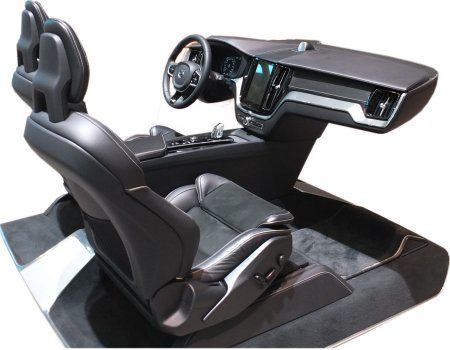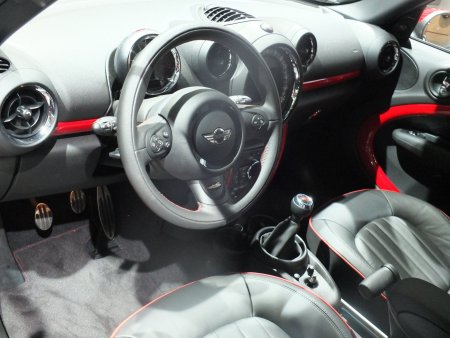 Design 1 Design 1

Let's take a more fundamental look at our topic, some of which will hopefully not seem too trivial to you. It starts with the distinction that a car is perceived both by its external appearance and by
its interior. Only rarely will the owner consciously look at their vehicle during the short periods before getting in and after getting out.
Whether the environment takes notice depends crucially on the 'behavior' of the vehicle or its owner. Very exclusive cars sometimes attract extra attention. However, if you sit in a car for hours,
perhaps even in a traffic jam, you are forced to deal with its appearance. However, a certain habit factor takes away a lot of that.
Things become more complicated when the interior is visible from the outside or the outer skin from the inside. There can be great disappointment if you don't have enough money for an
absolutely excitingly styled Lamborghini. Conversely, a modern Mini (pictured below) cleverly enhances its long-known external shape with inner pep.

There is also the case that a facelift can't go very far because the predecessor sold so well that you don't want to take any risks. This then leaves the opportunity for the designers to let off
steam a little more in the interior. Especially since that's where the most is happening at the moment because of the many new operating features, e.g. the replacement of buttons and analogue
displays with digital (touch) screens.
So what you have to remember about a car is that it has an inside and an outside, which makes it different from most three-dimensional works of art. A feeling of comfort when looking through
the window into a slightly larger limousine can certainly arouse additional sympathy. Or the design of the driver's seat, steering wheel and instruments in a sports car.
In a car, design plays an important role in determining the perception by the surroundings. The design of a food processor is certainly not unimportant, but after purchase it spends its life
exclusively in the kitchen. But a car is driving around. One would have to examine how much the design contributes to advertising a particular car or even the entire brand.
And that goes even further, because passengers are possible in almost all cars. A quick test drive with your neighbor in the new car could also arouse his craving. Especially because despite
the many safety functions, a car has still remained relatively clear. You can also feel like a driver in the passenger seat, make requests, for example to accelerate, or check the sound.
And yet the overview must not be neglected. Only a few, mainly manufacturers of sports cars, afford cockpits that take up a lot of attention. When it comes to the steering wheel, almost all
upper-class providers are now complaining about over-dimensioning. At the same time, the view outside is suffering more and more and cannot be completely replaced by cameras. Because
when I need the image in the traffic situation, it is not present on the monitor at that moment.
Care must also be taken to ensure that head-up displays do not take away too much of the view of the road. If at least the view to the rear was maintained. In addition, there are reflections of an
overly elaborately designed dashboard in the increasingly sloping windshield, chrome and/or even by piano lacquer on the steering wheel from the sun during the day and the headlights of
other cars at night.
Then the design contributes to the eternal argument about what should actually be higher in the middle, the handling of air conditioning or their air vents. Not to mention the screen, which can
of course also be used to operate the air conditioning. Center consoles sometimes develop into growing monsters. Now the handbrake lever has already disappeared here and there is still not
enough space. Obviously, it's less the intuitive operation that plays a role but more the impressiveness.
When it comes to upper-class seats, the designers' dilemma that gradually sets in becomes completely clear. It's a miracle that you don't feel any of the built-in electric motors, speakers or air
cushion fillers in your back or anywhere else. The external design is also slowly reaching its limits in terms of the possible variety. The emphasis from testers on how much better it is to sit on
this or that exemplar, which is subject to a surcharge, is too embarrassing. The best test, namely spending hours driving on it, is obviously not even possible yet.
Reconciling practicality and good looks has always seemed to be an ongoing task for designers. What will it be like with autonomous cars? All occupants are just passengers, they actually only
need a seat and, if all cars drive autonomously, they don't even need a seat belt or airbag. Should we fear a reduction in comfort as a certain protection against vandalism for vehicles that are
not only used privately?
Shouldn't modern people be re-educated in view of the possibility of perhaps five people sitting in a cell facing each other, similar to a classic train compartment, when then dying communication
through smartphone use or sleep involuntarily makes you want to sit behind the steering wheel of the last private car again? What can designers do about it?
|